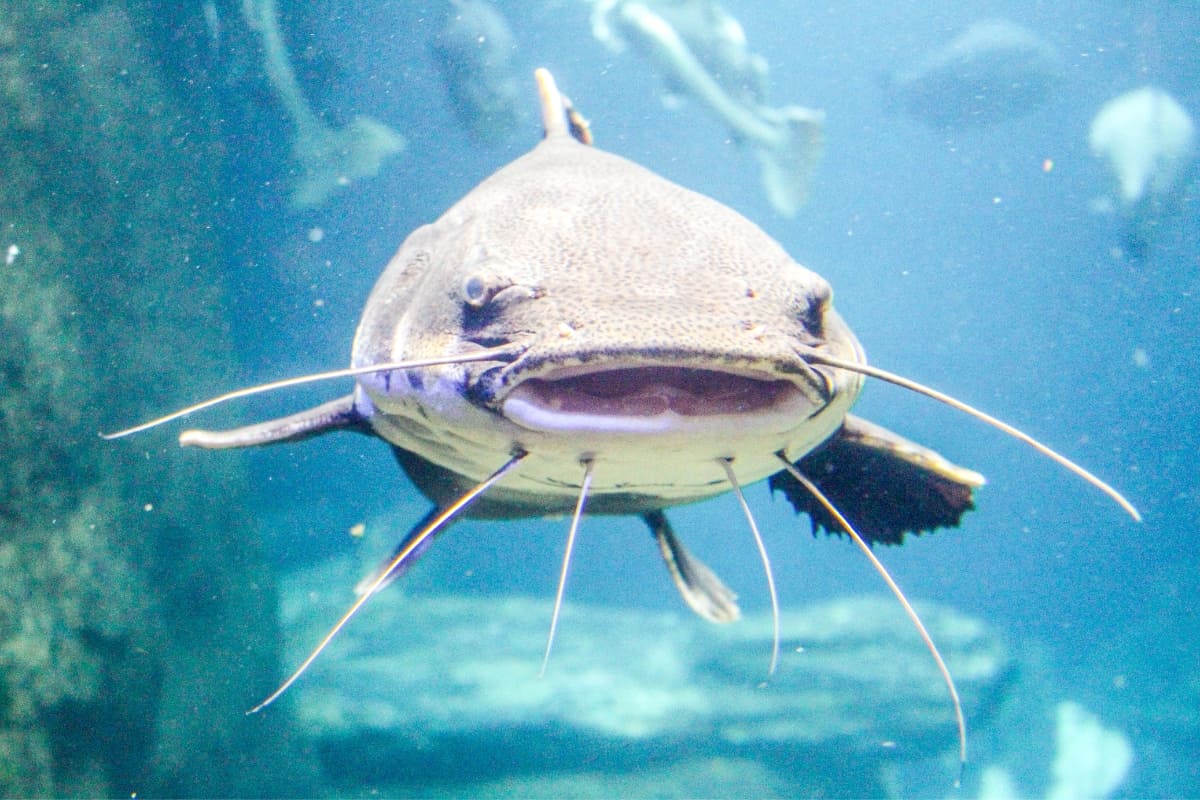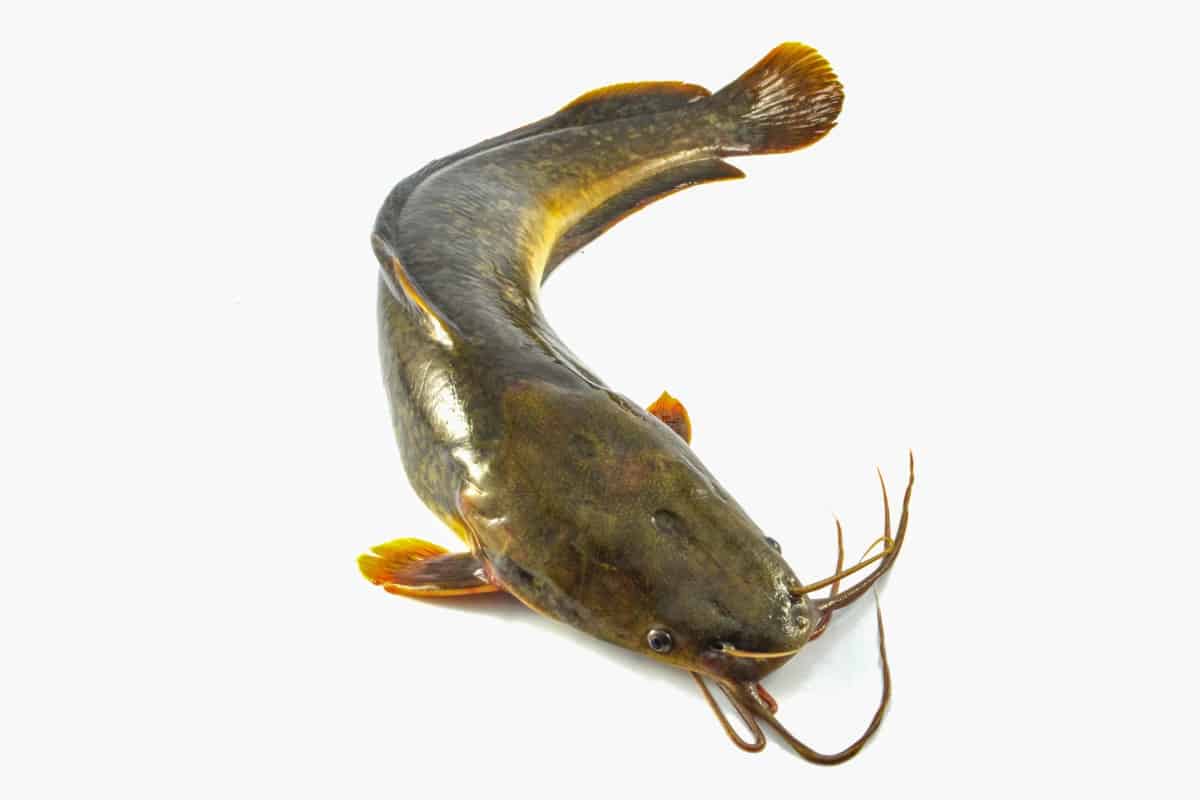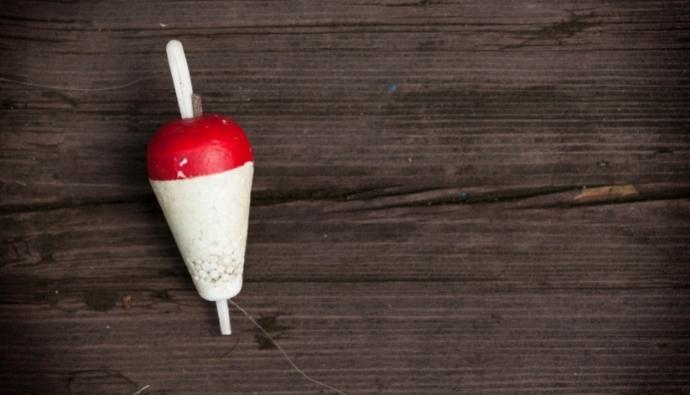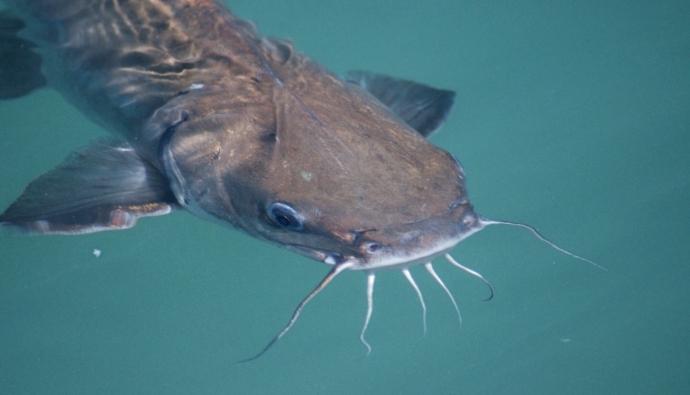If you want to catch catfish, then you need to try trotline fishing. A trotline is an effective method to cover a lot of fishing areas to catch fish passively.
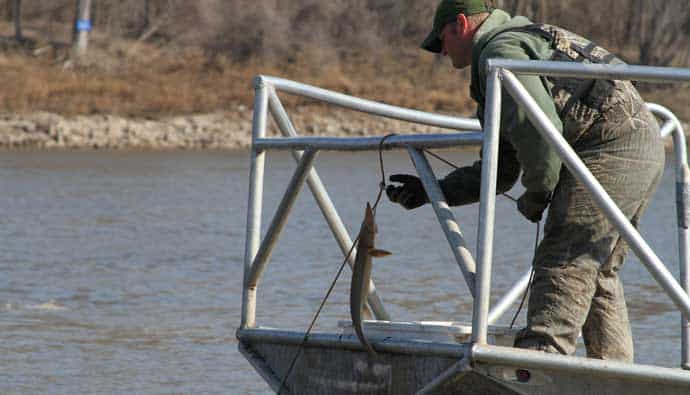
In this article, we’ll dive into what a trotline is, how to make one, and what bait to use to catch catfish and other fish species.
What is a Trotline?
A fishing line strung across a body of water, typically a stream or river, with dangling hooks with bait at various intervals used to catch fish.
Trotlines are popular in the catfishing community for their effectiveness. Most times, they are left overnight and checked on the following day.
When a fish bites the hook, they are held in place by the anchors securing the trotline until the angler comes to take them off the hook.
How to Make a Trotline
Making a trotline can be as straightforward or as complicated as you’d like. There aren’t many trotline secrets to unveil, but this little guide should get you up and running.
The most challenging task will be finding the right body of water to put yours in, but we’ll save that for later in the article.
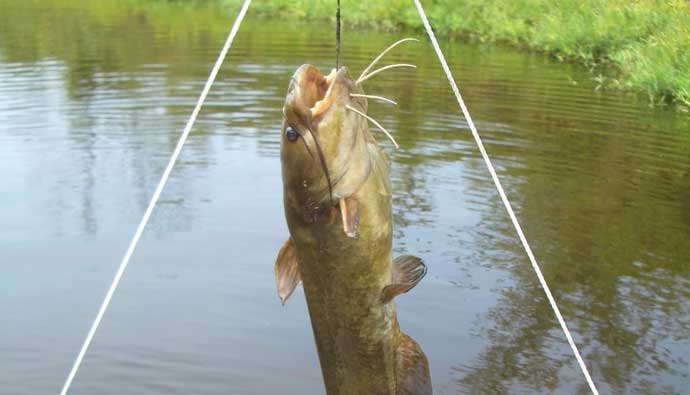
Where to Get Your Trotline Supplies
Most supplies can be found at your local hardware and tackle shops or on Amazon. If you’re in a survival situation, you can make a trotline from paracord and hooks.
However, if you plan to go trotline fishing regularly, then it’s essential to build a setup that will be robust enough for many uses.
Making a trotline at home has never been easier. A trotline setup is fairly straightforward, and it helps to know how to make them in case you’re ever in a survival situation.
Items you’ll need:
- Cord or line
- Clips
- Swivels
- Hooks
- Bait
If you check online, there are some ready-made trotlines that come in various lengths and with different numbers of dropper lines and hooks.
But where’s the fun in that!
Let’s dive deeper into each of these items so you can make your own.
Trotline String
Trotlines can be made out of any string from paracord to monofilament. It depends on your preference, but if you had to choose a trusted cord to go with, we recommend you try some 550 paracords or something just as robust.
550 paracord is common and easy to get at your local hardware stores. Many people take this cord camping, so it’s worth practicing making trotlines with them in case an emergency happens.
If you’re not in the mood to try paracord, twine works just as well and can be cheaper.
Trotline Hooks
3/0 hooks seem to be the best trotline hooks for catching medium to large catfish.
Since you have many dropper lines, it’s worth experimenting with different sizes too. You’ll want to get circle hooks since they don’t need to be set.
Trotlines are passive – who’s going to set them but the fish themselves!
Trotline Swivels
Swivels will join the main trotline to the dropper lines. It’s recommended that you go with barrel swivels to help keep the lines free from wrapping or tangles as the fish fights to get off the hook.
Trotline Clips
Depending on your preference, clothes can be used in place of swivels or with a swivel. Trotline clips look similar to tuna clips. Simply pinch and open to clip them to your main trotline and have the other end tied to your dropper line.
Trotline Brads
Brads are tiny hinge clips that act as stoppers for your swivels and clips, so they stay in a specific spot on your mainline. Depending on your setup, you could simply use a knot on the mainline instead of buying brads.
Trotline Winder
For the everyday trotline rigger, your hands will make a perfect winder. However, once you start setting longer trotlines, it’s a good idea to get yourself a trotline winder to help you bring in your line full of fish or crabs.
Chesapeake Trot Line Winder is a great one to check out.
Trotline Prop Stick and Roller
If you’re going for crabs, making or buying a prop stick and roller for your boat might be worth it.
These prop sticks can be made from simple PVC pipe, metal tubing, or if you want to get fancy, add a roller to help you pull the trotline up out of the water easier. This allows you to collect your catch while moving from one end of the line to the other.
Trotline Anchors and Floats
For a trotline to be set properly, it’s important to weigh down each end of the trotline in the water and have floats to keep the line from touching the bottom.
Sometimes you won’t need anchors on each end because you can use fixed anchors such as trees, sticks, or rocks. However, if you’re trying to run a trotline in a lake, for example, you’ll need around an 8 to 15-pound weight to keep your line in place and the fish from escaping.
Read Also: Best Fishing Line Spoolers
Building Your Homemade Trotline
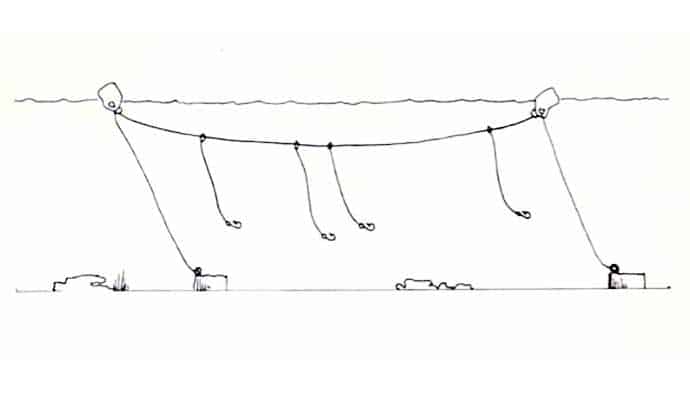
Step 1: Cut your mainline
Pick a size of mainline that works for your body of water. If your trotline is going across a river, it shouldn’t be longer than the width of the river unless you decide to set it at an angle.
Some anglers like long lines, and some like shorter ones. Depending on the length of the line, this will dictate how many drop lines you’ll have. If you’re new to trotline fishing, try anywhere from 15 to 40 feet in length to get started.
Step 2: Add your swivels or loops to your mainline
Your dropper lines need a place to hold on to. Therefore, if you have swivels, put them on your mainline depending on how many dropper lines you plan to use.
We like to space the dropper lines out around two to three feet apart to prevent tangling. Swivels are nice because they help prevent tangles when the fish is fighting to get free.
Keep the swivels in place by using brads or knots on each end of the swivel.
Step 3: Add your dropper lines using clips
If you haven’t already made your dropper lines, it’s time to do that now. Take your clips and attach them to one end of the dropper line. Dropper lines can be any length as long as they aren’t too long to reach the bottom of where you’re fishing.
Say, for example, you choose to make a one-foot dropper line. If you’re using a thin string or cord, it could be good to take two feet of material and tie them together at the loose ends. This will make a loop that can be slipped through the clip and secured.
Do the same on the hook end, and you’re set.
If you don’t want to use the loop method, choose any knot that works for you and secure the clip to one end and the hook to the other.
Bait your hooks and clip your dropper lines to your mainline swivels.
Step 4: Add your anchors and floats
You should have left enough rope at each end of your mainline to attach the anchors and floats. Your anchor will rest at the bottom of the waterway, and there will be enough slack for the float to rest on the water’s surface to mark where it’s been dropped, keeping the drop lines from reaching the bottom.
Your anchor doesn’t need to be a weight. You could easily attach one end of your mainline to a tree and the other end to an anchor or another fixture.
Setting a trotline depends on your situation. Let’s dive into it in more detail in our How to Set a Trotline article. Also, don’t forget to check your local state regulations before setting your trotlines.




 Facebook
Facebook YouTube
YouTube